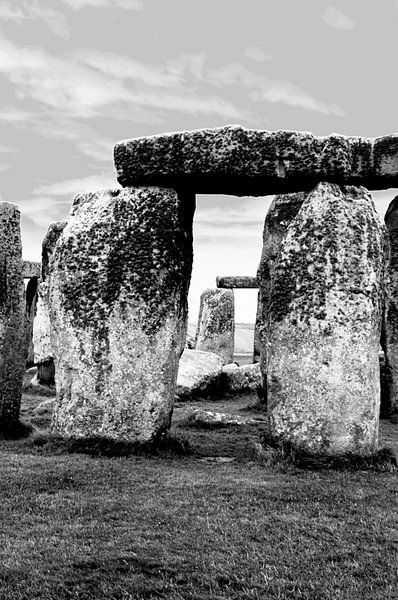Buy this landscape artwork Stonehenge 2 by Ray63 on canvas, ArtFrame, poster and wallpaper, printed on demand in high quality.
About "Stonehenge 2"
by Ray63
About the artwork
Stonehenge, located on Salisbury Plain in Wiltshire, England, is a prehistoric monument whose construction began around 3100 BC and evolved in several stages until around 1600 BC. The site initially consisted of a circular earthen wall with wooden or stone posts, which served as a cremation cemetery. Around 2500 BC, the iconic large sandstones were erected in the centre, creating an outer circle with lintels and an inner horseshoe-shaped arrangement, alongside smaller blue stones brought from Wales. In subsequent centuries, the blue stones were rearranged and the Avenue, a processional road, was built connecting Stonehenge to the River Avon. The purpose of Stonehenge remains subject to debate, with theories ranging from a temple and astronomical calendar to a cemetery or a monument to unite the people of ancient Britain. Its sophisticated construction, with meticulously connected stones transported from considerable distances, makes it a unique and important monument that offers insight into the beliefs and engineering skills of the Neolithic and Bronze Age eras.
About Ray63
Born in 1963. When I was young I really liked drawing with pencil. Left it alone for a long time, but since 2015 I picked up drawing again. Working with dry drawing techniques I like very much. Especially working with charcoal has my big preference. Easy to steer, .. Read more…
 Netherlands
Netherlands Ordered in July 2020
Ordered in July 2020
 Netherlands
Netherlands Ordered in November 2024
Ordered in November 2024
 Germany
Germany Ordered in March 2025
Ordered in March 2025
 Germany
Germany Ordered in March 2019
Ordered in March 2019
 Germany
Germany Ordered in May 2019
Ordered in May 2019
 Netherlands
Netherlands Ordered in December 2021
Ordered in December 2021
 Netherlands
Netherlands Ordered in January 2024
Ordered in January 2024
 Netherlands
Netherlands Ordered in December 2024
Ordered in December 2024
 Germany
Germany Ordered in November 2019
Ordered in November 2019
 Germany
Germany Ordered in April 2019
Ordered in April 2019
 Netherlands
Netherlands Ordered in August 2024
Ordered in August 2024
 Germany
Germany Ordered in December 2021
Ordered in December 2021
About the material
ArtFrame™
Interchangeable Art Prints
- High-quality print
- Easily interchangeable
- Acoustic function
- Large sizes available
Discover the artworks of Ray63
 World EggRay63
World EggRay63 Be SquareRay63
Be SquareRay63 JumpRay63
JumpRay63 Lotus 49Ray63
Lotus 49Ray63 Naked WomanRay63
Naked WomanRay63 TeleRay63
TeleRay63 Tele DiaRay63
Tele DiaRay63 VooruitRay63
VooruitRay63 Vooruit DiaRay63
Vooruit DiaRay63 LukaRay63
LukaRay63 Luka DiaRay63
Luka DiaRay63 V-CodaRay63
V-CodaRay63 AngeliqueRay63
AngeliqueRay63 Angelique at NightRay63
Angelique at NightRay63 Angelique in Purple LightRay63
Angelique in Purple LightRay63 NgumaRay63
NgumaRay63 NgumaRay63
NgumaRay63 Ford GT40Ray63
Ford GT40Ray63 Racing in the RainRay63
Racing in the RainRay63 Porsche RacingRay63
Porsche RacingRay63













 England
England Landscapes
Landscapes Photo wallpaper
Photo wallpaper Photography
Photography









